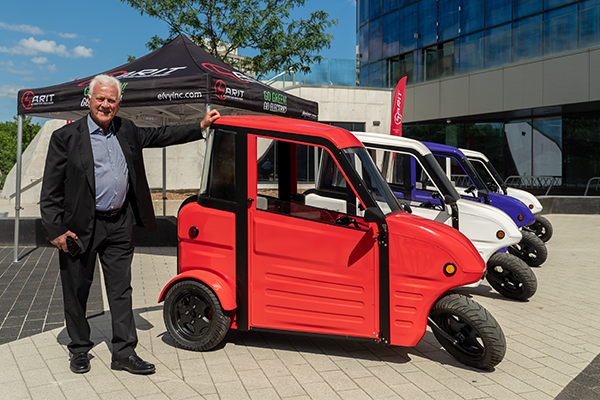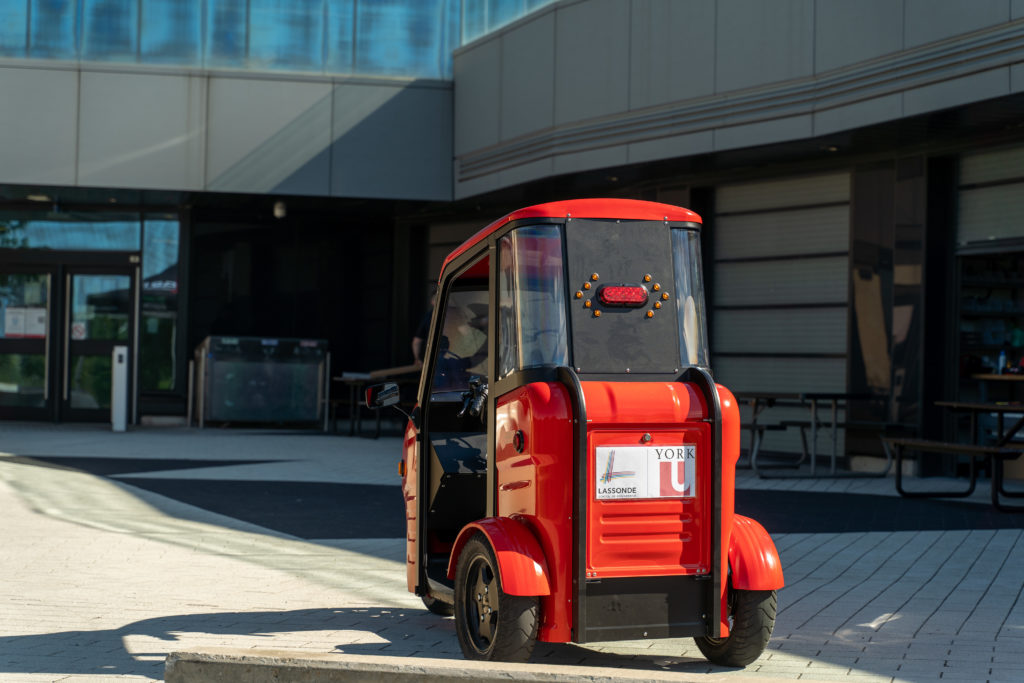Lassonde accelerates green mobility revolution with electric cars
Tags:

This story originally appeared in YFile.
In the 18 months since a prototype of a tiny, three-wheeled electric commuter car took a first test drive at York University, much progress has been made in driving the vehicle to the forefront of the green revolution in urban transportation.

Arundhati Kandan Ramdas, mobility project manager at Lassonde School of Engineering, reports that the mini car known as SARIT (safe, affordable, reliable, innovative transit vehicle) is now in production, harnessing some of the ideas and new technologies developed soon after it arrived on York’s Keele Campus in 2022 for intensive rounds of study.
“We have successfully tested and integrated AI-powered vision systems for pedestrian detection into the SARIT, which will allow us to address potential concerns about pedestrian collisions, and to deploy the vehicle in popular Toronto locations, such as the Toronto Zoo, Exhibition Place and the new Markham Demonstration Zone, where York is a partner,” Ramdas says.
University researchers also added trailers to the SARIT to facilitate cargo transportation of everything from parcels to food, and fertilizer for agriculture.
“As well, we are deploying keyless entry for ignition to enable vehicles to be more easily shared, replacing the traditional key with an app for a smartphone,” she adds.

Initiated by Canadian automotive maverick Frank Stronach (his Magna International company in Aurora, Ont., designed the prototype), the SARIT project epitomizes York University’s “living lab” concept, serving as a vital testing ground for sustainable transportation solutions.
A former York governor, Stronach contributed $100,000 to develop the SARIT as a next-generation vehicle.
“I chose York University because its living lab and entrepreneurial mandates are perfectly aligned with SARIT’s objective to revolutionize the personal transportation space,” Stronach said at the time in an interview with The York University Magazine.
Stronach’s significant investment in the SARIT initiative underscores a shared commitment to sustainability and innovation. His generous donation will drive ongoing research, development and testing of SARIT electric vehicle prototypes, cementing York’s position as a trailblazer in sustainable urban mobility.
The SARIT’s top speed of 32 kilometres per hour makes it ideal for commuting – it’s safer and more comfortable than alternatives such as e-bikes. It also costs less than standard electric vehicles, with operating, insurance and electricity costs averaging under $300 per year, Ramdas says.
“The SARIT offers a unique solution to the challenges of converting to zero-emission vehicles, providing a variety of single-use and share-use solutions that enhance mobility and reduce transportation costs with zero emissions.”
Looking ahead, SARIT’s expansion involves forming partnerships to address mobility challenges and showcasing its effectiveness and environmental benefits at various community events. An entrepreneurial challenge to be launched at the University will also aim to leverage SARIT’s mobility capabilities for creating unique ventures, fostering innovation and sustainability.
“We are excited to start to see how the ideas and technologies we have been working on at York lead to commercial success,” Ramdas says.